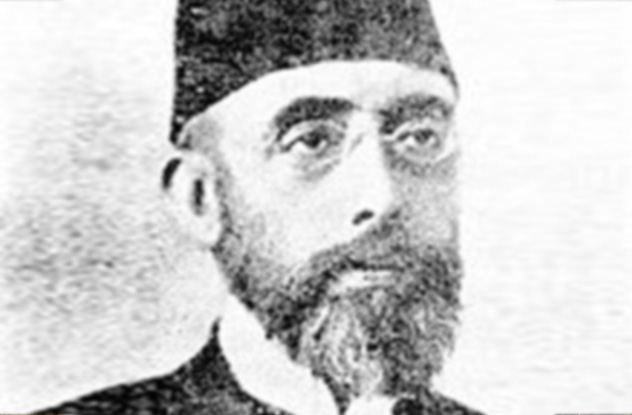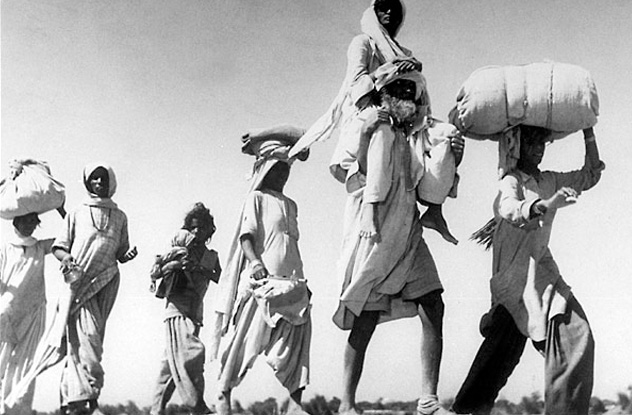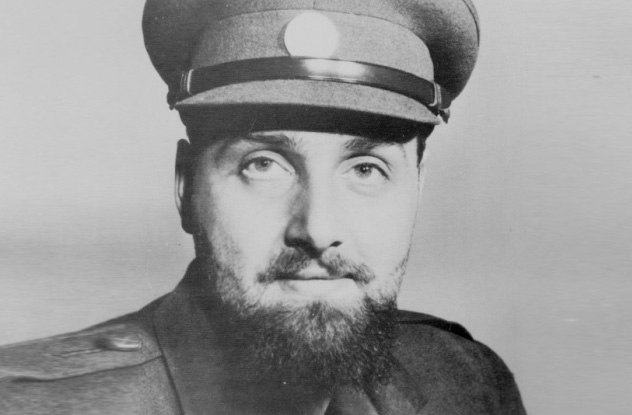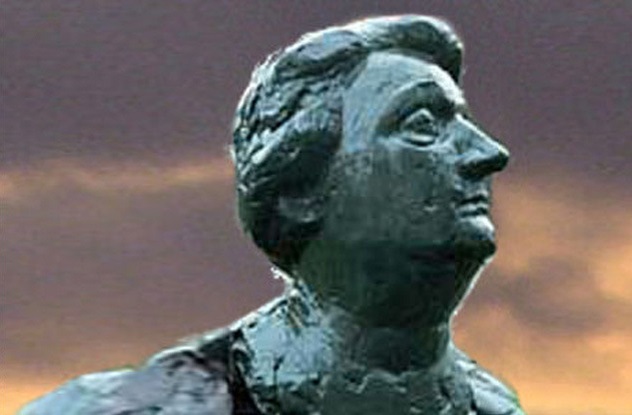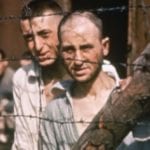Awesome as he was, though, Schindler was far from unique. We’ve already told you about John Rabe, the “Oskar Schindler of China.” Throughout the 20th century, others with little to gain and everything to lose stood up to psychotic regimes, saving thousands of lives.
10 The Cardinal Who Stood Up To Torture
On September 11, 1973, Augusto Pinochet overthrew Chile’s democratically elected president. An orgy of torture and murder followed, as right-wing death squads stalked the capital, targeting dissidents. Faced with certain death if they stayed, most of the regime’s opponents fled the country. Not Cardinal Archbishop Raul Silva Henriquez. Despite moderate Catholics being one of Pinochet’s targets, Cardinal Silva not only stayed in Chile—he set up a group to help people survive the persecution. The Committee for Cooperation for Peace offered financial assistance, legal aid, and sanctuary for those targeted by the regime. When it couldn’t protect dissenters, the Cardinal personally hid them under his own bed. The group excelled at defying authority. When Pinochet ordered it closed down in 1976, Cardinal Silva simply renamed it and changed its location to the Santiago cathedral—where a loophole in Chilean law meant the dictator had no jurisdiction. The Cardinal helped tens of thousands escape persecution. Without his heroism, modern Chile would be a much emptier place.
9 The Smuggler Who Stuck It To Communism
Step back in time 40 years, and Eastern Europe was a very unpleasant place to be. Czechoslovakia had been grabbed by the Soviet fist, and the Stasi had East Germany. But not everyone was easily cowed. For Rainer Schubert, the Berlin Wall offered a chance to stick it to communism—97 separate times. As one of the GDR’s best people smugglers, Schubert was adept at helping citizens escape the party’s clutches. During one memorable cross-border escapade, he whisked two people out of Prague by hiding them underneath a live tiger. Despite living at a time when making even one illicit trip to the West meant braving imprisonment, torture, and death, Schubert kept his operation up for three whole years. In that time he saved nearly 100 people from a life of crushing misery. In 1975, the Stasi caught up with Schubert and sentenced him to nine years in one of the country’s most notorious prisons. Despite being told he would die there, Schubert survived, showing up the Stasi one last time.
8 The Stockbroker Who Saved Czechoslovakia’s Children
In 1938, British stockbroker Nicholas Winton was preparing for a winter skiing holiday, when a friend asked him to come to Prague. Abandoning his plans, Winton instead spent a not-very-merry Christmas traipsing around Jewish children’s camps in the city. Realizing the full horror of what awaited these kids, Winton vowed to get them to safety in England. The British government had set a quota on refugees that had already been reached. So Winton returned to the UK and personally begged the Home Office to let him bring more kids in, guaranteeing he’d finance their crossing and personally rehouse them. Eventually, the government caved in. After all, how many starving kids could one man possibly get to Britain? Try 669. In the final months before the outbreak of war, Winton packed five whole trains with Jewish children. Today, there are thought to be over 6,000 people alive thanks to Winton. In the Czech Republic, he’s considered a national hero. And best of all, he lived to see the difference he made. When a British TV show invited him on in 1988, the host asked people in the audience to stand if they owed Winton their lives. To his tearful surprise, nearly everyone stood.
7 The Strangers Who Saved Rwanda’s Orphans
The year 1994 ushered in one of the 20th century’s largest periods of bloodshed. In Rwanda, Hutu extremists went on the warpath, murdering 800,000 Tutsis in 100 days. It was a slaughter almost beyond the scope of imagination. Yet even in the face of this unprecedented carnage, three people banded together to save the lives of over 400 children. On the day the violence kicked off, the Gisimba brothers returned to the orphanage they owned to find hundreds of Tutsis sheltering there. As half-Hutus, the brothers were exempt from the slaughter—so long as they did nothing to help the Tutsis. Most people would have chased the refugees away, fearing for their own lives, but the Gisimba brothers weren’t most people. For weeks, they kept their charges safe from militia groups, hiding them, bribing officials, and doing everything in their power to keep death at bay. It wasn’t enough—eventually, the entire orphanage was targeted for extermination. But luck was on the brothers’ side. Carl Wilkens was the only American to stay in Rwanda through the genocide. On the day the orphanage was to be destroyed, he turned up with some supplies at the exact same moment the killers arrived. Seeing a potential witness on the scene, the Hutus decided to postpone the massacre for a couple of hours. That was all Wilkens needed. He drove straight to the Prime Minister’s office and begged the man to spare 400 kids’ lives. Miraculously, he listened. Thanks to Wilkens’s efforts, the orphanage was evacuated and the children got a chance at life.
6 The Poor Farmer Who Fooled the Khmer Rouge
In 1975, Pol Pot’s Khmer Rouge took control of Cambodia and initiated Year Zero. Cities were emptied, the entire population dragged off to tiny communes. In these jungle prisons, one man would be put in charge of 100, executing anyone who failed to obey the regime. In most communes, dozens upon dozens died. In Van Chhuon’s, the death toll stopped at one. Before the Khmer Rouge took power, Van Chhuon was one of the poorest men in Cambodia. He and his wife lived in a bomb crater, eating lizards to survive. When Pol Pot’s goons set up a nearby compound, they reasoned that the poorest man would also be the most ideologically pure. During his tenure as commune chief, Van Chhuon stopped mass starvation by sneaking his charges extra rations—a crime punishable by death. When the militias turned up, looking for a known “enemy of the revolution,” Van Chhuon would tell them that another group of soldiers had already taken the target. He even once rode right into the killing fields to plea for a commune member’s life. Remarkably, both he and the member survived. During Pol Pot’s entire reign, only one person died in Van Chhuon’s commune—a Khmer Rouge stooge whom the party had decided wasn’t pure enough. Even then, Van Chhuon felt guilty about the death, suggesting this one poor farmer had more humanity than the rest of the commune leaders combined.
5 The Doctor Who Healed Bosnia’s Muslims
In 1992, Serb forces overran the central Drina valley, sending some 50,000 Bosniak refugees flooding into the town of Srebrenica. In the face of this oncoming Armageddon, most with the means to do so fled. But not Dr. Ilijaz Pilav. Realizing that a long siege was coming, he and four friends stayed behind to work the abandoned hospital. In doing so, they saved hundreds of lives. They faced a challenge almost beyond imagining. The hospital had been gutted. There were no supplies at all. Every single day, refugees with horrific wounds poured in, in urgent need of treatment. When the Serbs started shelling the town, the hospital was incapable of holding all the casualties. Dr. Pilav and his men worked without sleep for days at a time, under constant mortar fire and potentially seconds away from a very messy death. Yet they kept on working. Despite being only 28 and having had no formal training as a surgeon, Dr. Pilav carried out 3,500 successful operations during the siege. The town didn’t make it through the war. On July 11, 1995, UN peacekeepers opened the final safe zone to the Serbs, who murdered 8,000 men and boys in an act of genocide. Many fled, Dr. Pilav among them. Although he may have been unable to stop the massacre, Dr. Pilav at least gave his patients a shot at life—one they would never have had without him.
4 The Turkish Governor Who Said ‘No’ to Genocide
In 1915, the Ottoman Empire committed the first genocide of the 20th century. In seven years, Turkish fanatics exterminated 1.5 million Armenians. Across Turkey, local lawmakers and governors herded their Armenian citizens into convoys destined for killing fields and gas chambers. As former governor of Aleppo, Mehmet Celal Bey had become only too aware of what the deportations meant. Now in charge of the vast province of Konya, he was determined not to let his people die on his watch. As death squads stalked the streets, Bey desperately petitioned Istanbul to spare his citizens, arguing that there was no Armenian resistance in the region. When that failed, he openly defied orders to arrange mass deportations, instead personally sheltering and helping any Armenians he could. Although exact numbers are difficult to come by, it’s now thought that he saved thousands of lives. But this wasn’t enough for Bey. As he later wrote, he felt as governor like “a person sitting beside a river, with absolutely no means of rescuing anyone from it. Blood was flowing down the river, with thousands of innocent children, irreproachable old men, and helpless women streaming down the river towards oblivion. Anyone I could save with my bare hands, I saved, and the rest went down the river, never to return.”
3 The Sikh Who Stopped The Horrors Of Partition
When the British left India in 1947, they left behind a country on the edge of civil war. Hindu and Muslim extremists were itching to murder one another, and bloodshed seemed inevitable. To head the violence off, the government tried dividing the country into two states, Muslim Pakistan and Hindu India, but they rushed the borders, leaving many stranded on the wrong side. The resulting violence killed around one million people. It would have killed more were it not for Khushdeva Singh. A Sikh doctor, Singh ran a refugee station right at the new border. Unlike the fervent extremists all around him, he made it a policy to shelter people from all religions, treating them equally. But his most heroic actions came when local militias made it clear they were planning to enter the station and murder anyone Islamic. Rather than sit back and let violence unfold, Singh embarked on a campaign of bribery, flattery, and outright lies that succeeded in smuggling all the town’s Muslims to a safe camp. Not content to bask in this victory, Singh then repeated his plan in three other towns. When he finally visited Pakistan after the violence was over in 1949, Muslims whom Singh had saved lined up to salute him. At least 317 people claimed they owed him their lives.
2 The British Rabbi Who Risked Everything To Save His People
In 1938, British Rabbi Solomon Schonfeld had plenty of reason to be agitated. Germany was passing increasingly anti-Semitic laws, and the future of Europe looked very bleak. But Schonfeld wasn’t the sort to just roll with whatever punches history threw his way. Schonfeld was the sort to grab history by the throat and force it to do what he wanted. With the dark clouds of the Holocaust looming, Schonfeld made it his own personal mission to save as many Jews as possible. First, he demanded the UK Home Office print him 500 visas for synagogue officials and their families—a move that saved about 1,300 lives. Not content with already out-Schindler-ing Schindler himself, he then got another 500 Jewish children to England before the war began. But the craziest part came when it was all over. Mere months after Germany capitulated, Schonfeld made himself an army uniform emblazoned with the Star of David and headed off into the heart of former Nazi territory. There, he traveled between the death camps, bringing salvation to those who needed it most. In total, he’s said to have saved 3,500 people—nearly triple Oskar Schindler’s own record.
1 The Woman Who Rescued Europe’s Children
Truus Wijsmuller-Meyer may be the most important humanitarian most of us have never heard of. Faced with the horrors of the Holocaust, she wasn’t content to simply rescue 100 or even 1,000 lives. In less than one year, she saved 10,000. This Dutch social worker traveled right into Nazi Vienna and personally convinced Adolf Eichmann to let her take 600 Jewish children to England immediately. Insanely, he agreed. Even more insanely, Truus was just getting started. As Europe careened toward war, she turned up all over the continent, dealing with the Gestapo, bribing frontier guards, and generally acting like a one-woman anti-genocide machine. In Berlin, she joined forces with Jewish rescuer Recha Freier. When Germany steamrolled into the Netherlands, she returned to her home city of Amsterdam and immediately began smuggling children into Switzerland. Between November 1938 and September 1939, she got around 10,000 children to safety—the equivalent of rescuing the entire population of the Falkland Islands three times and then throwing in Vatican City for good measure. For her efforts, she was recognized as “Righteous Among the Nations” by Israel—though we prefer the more accurate term “superwoman.”






